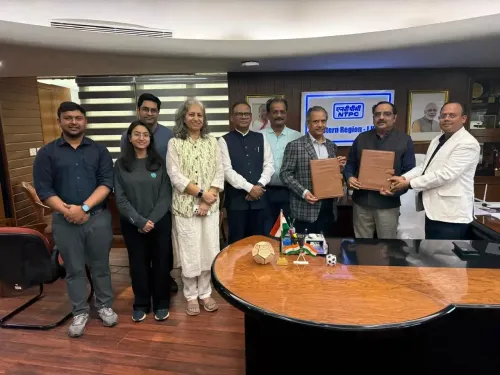Will India's Semiconductor Market Surpass $103.5 Billion by 2030?
Synopsis
Key Takeaways
- India's semiconductor market is projected to grow to $103.5 billion by 2030.
- The sector is driven by demand for electric vehicles and 5G technology.
- Over 250,000 semiconductor professionals currently work in India.
- New job postings in the sector are expected to increase significantly.
- India is becoming a global hub for semiconductor talent and innovation.
New Delhi, Sep 11 (NationPress) India's semiconductor market is anticipated to reach $103.5 billion by 2030, escalating from $54.3 billion in 2025, with a remarkable 13.8% compound annual growth rate (CAGR) -- surpassing global standards, according to a report released on Thursday.
According to Quess Corp, a workforce solutions provider, the semiconductor landscape in the nation is primarily driven by everyday devices such as smartphones, laptops, and industrial systems, which collectively account for nearly 70% of the market.
As demand surges for electric vehicles, the rollout of 5G technology, and the swift establishment of data centers, the market for advanced chips is poised for a significant upswing, with projections indicating that hyperscale capacity could increase by over 75% by 2030, with electric vehicles expected to constitute almost a third of all new vehicles.
The India Semiconductor Mission (ISM) is laying a robust foundation for domestic capabilities, bolstered by projects worth Rs 1.6 lakh crore and the creation of nearly 29,000 new jobs.
Investments, such as Micron’s ATMP plant in Gujarat, are reinforcing the depth of packaging and testing, while state initiatives in areas like Tamil Nadu, Kerala, and Gujarat are helping Tier-2 clusters to emerge as significant semiconductor hubs.
“India's semiconductor sector is entering a transformative decade. With the Government of India accelerating approvals for ISM 2.0, expected to exceed $10 billion, our report emphasizes both the vast opportunities and the challenges regarding talent readiness,” stated Kapil Joshi, CEO of IT Staffing at Quess Corp.
Demand is growing across all sectors, from consumer devices to electric vehicles and advanced data centers, positioning India as a vital player in global supply chains. The unique aspect of this narrative is the blend of scale and capability, he added.
India’s semiconductor global capabilities centers (GCCs) have evolved from mere back-end support units. Almost half of new chip initiatives now incorporate AI accelerators, with one-third of verification teams utilizing machine learning.
“Engineers in India are pioneering next-generation domains such as multi-die integration, AI-assisted design, TinyML firmware, and AI-enhanced timing closure. These innovations make India a testing ground for AI-first design workflows that global companies are starting to embrace,” the report highlighted.
India currently boasts over 250,000 semiconductor professionals, with an additional 43,000 new job postings anticipated in 2024-25.
This talent pool is projected to expand by over 120%, reaching nearly 400,000 by 2030, positioning India as the world’s second-largest semiconductor talent hub, following the United States.
The workforce encompasses design, embedded systems, EDA tool development, and ATMP manufacturing, underscoring India's commitment to building capabilities across the entire value chain, as stated in the report.










